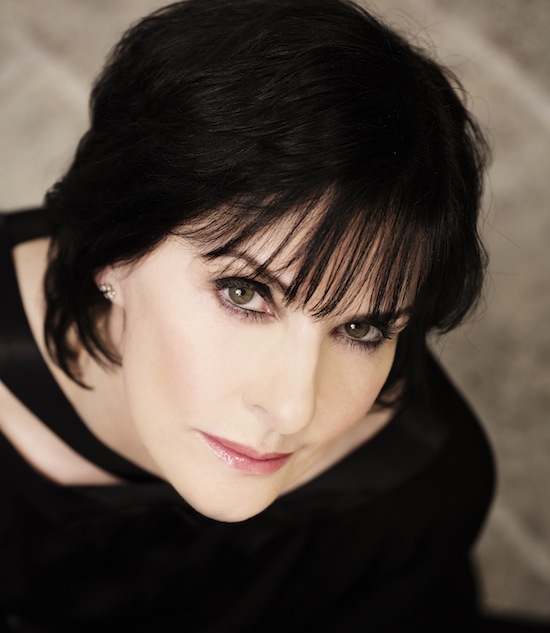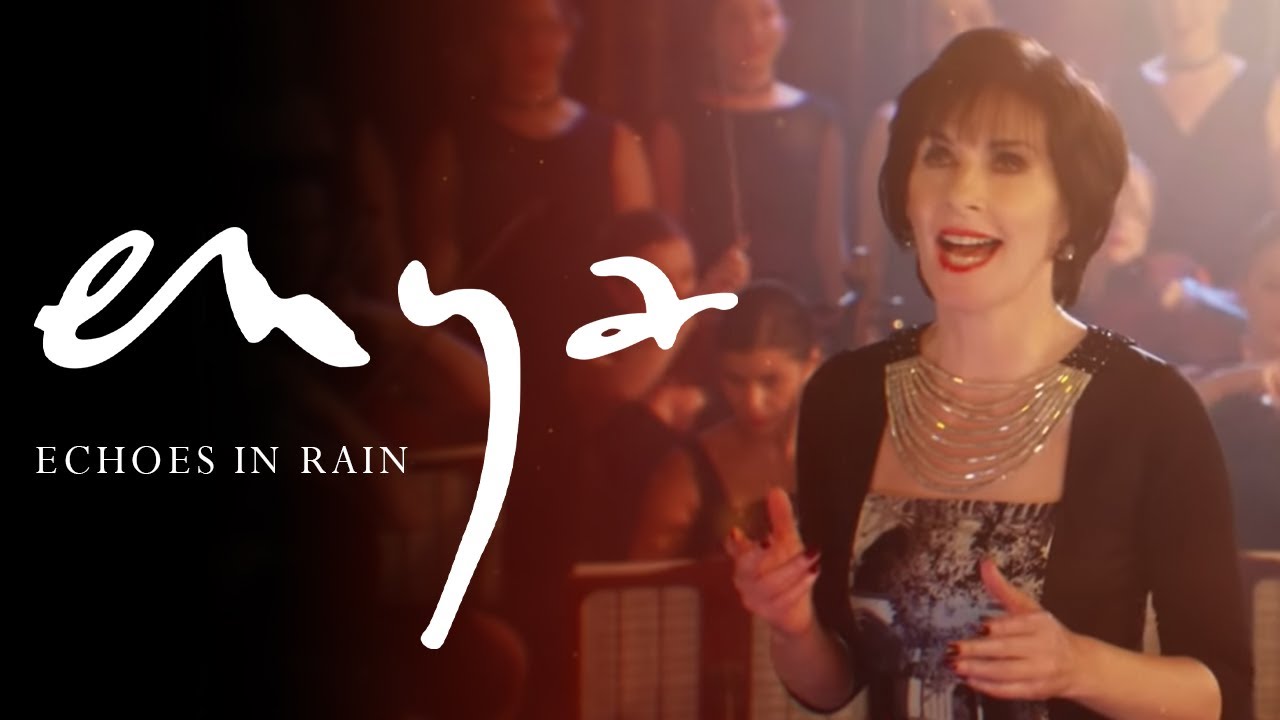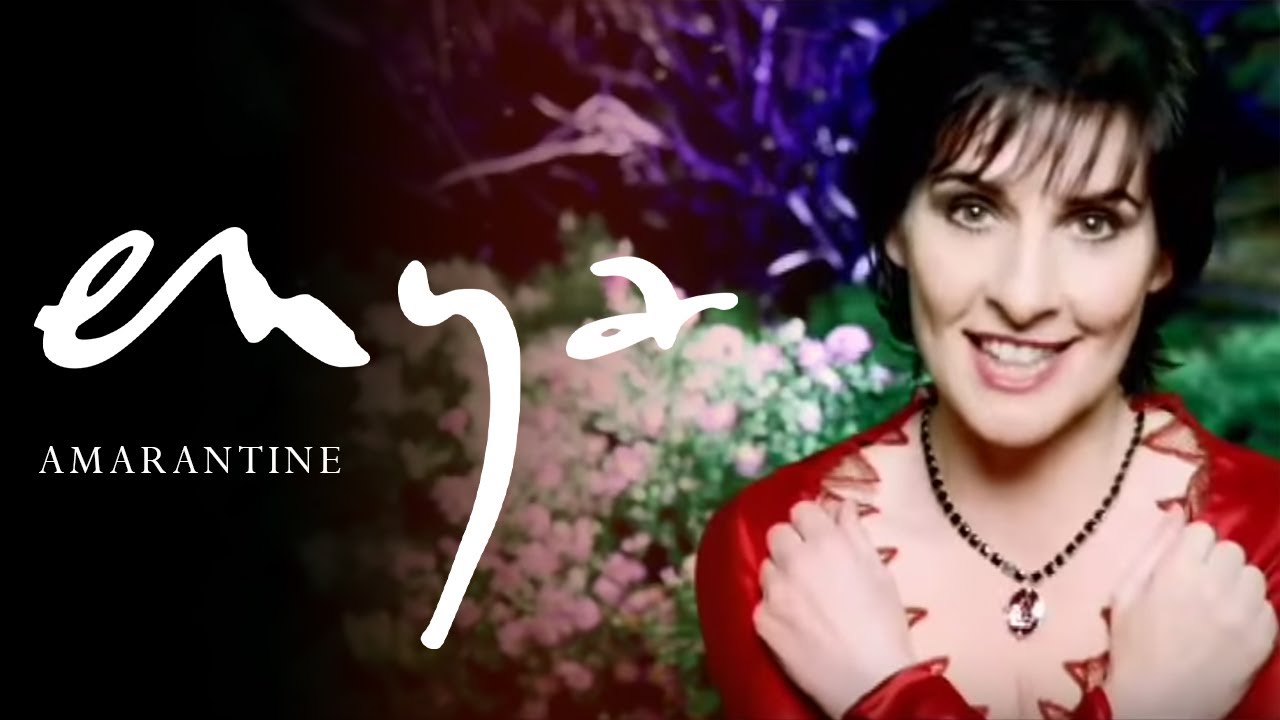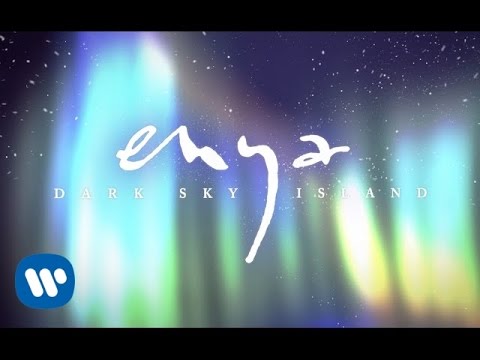Back in 2013 The Quietus published an article on the 25th anniversary of Watermark. It was a defence of both album and Enya against the prevailing view of her as a dated, patchouli car-freshener relic of 80s MOR, and suggested it might actually be an underrated masterpiece. In the intervening years, all sorts of Enya fans have come out of the woodwork, from Gazelle Twin to Holly Herndon. Mica Levi has played her in DJ sets, while Chris Carter of Throbbing Gristle and Carter Tutti Void recently tweeted “I could (lazily) put my appreciation of Enya down to my Irish descent. Or… just admit I really like her music and I don’t care who knows.”
Yet Enya is not merely a pop inspiration for the avant-garde, but an artist who ought to be respected as a pioneer in her own right. Watermark mixed synthesisers and endlessly dubbed vocals for a clearly defined aesthetic, one she continues to mine to wonderful effect on new album Dark Sky Island. Enya’s melodies are simple yet lack the earnest and transparent leap for canonical authenticity of myopic, confessional AOR artistes like Adele or Coldplay. Unselfconsciously poetic, Enya’s lyrics embrace the natural world and journeys through vivid landscapes. These are even extra-terrestrial, in the form of an entirely invented culture that gives Tolkein-inspired 70s prog a run for its magic ring. Using at-times bizarre tools and techniques, Enya has become one of the most successful experimental pop artists of all time, selling over 80 million albums that sound like nothing else, entirely on her own terms.
‘She’ and ‘her’ are not entirely accurate ways of describing Enya, however. The project is and always has been a collaboration between Eithne Ní Bhraonáin (Enya being the Anglicised version of the Gaelic), her manager and producer Nicky Ryan and his partner Roma, who writes all the lyrics.
Enya enters her suite at the Dorchester Hotel in a sharply-cut black dress accessorised with rings hanging from a long chain around her neck. Her voice is as soft as you might expect, her conversation considered and thoughtful, but has a curious staccato dynamic to it. Her sentences are peppered, as if as punctation, with “as such”. Roma and Nicky Ryan, who I interview later in the bustling, marble-pillar-lined Promenade cafe, are an absolute hoot. Their interaction is of two people who’ve been both in love and worked with one another so long that intuition is their only way of being. Roma also wears black, with frilly purple trim. His hair is swept back above a black roll neck and a draped silk scarf that might have been selected to match the Dorchester decor. On his feet are a spectacularly sharp pair of khaki suede boots. The three of them resemble raffish, well-heeled goths.
Aside from Leonard Cohen and the hymns of Charles Wesley, Enya is the longest-standing musical soundtrack to my life. I explain this to Enya, who immediately asks: “I’m just intrigued by what you said about being ten years of age and listening to Watermark. What happened when I was singing in Gaelic or Latin, did you just accept it? It was the different moods? It wasn’t just twelve ‘Orinoco Flow’? People heard that and bought the album.”
It was actually the textures of the rest of the album that first connected, the evocation of hyperreal places fictional and taken from the map, the simplicity of the yearning. That, and these weird, plastic, shimmering keyboard sounds and strings that would slide like water droplets down the window on car journeys during which Watermark was a frequent soundtrack. Undoubtedly there was a connection between her music and my church upbringing. “So would you have known Latin?” Enya asks. I’m a Methodist, I tell her; we don’t bother with the Latin. But where did that sound, so uniquely, definably Enya, come from?
Nicky Ryan was always interested in “sound as an entity” and as a child spent hours bashing the keys of an old piano with his foot stamped hard on “the loud pedal, like the end of ‘A Day In The Life’, resonance going on forever.” He loved making recordings of any old sound, like doors closing, and would go into town with a friend called Vincent O’Hara pretending to be doing interviews as they taped the world around them. Nicky even won a competition to sit in on a Beatles studio session with his own version of ‘In The Mood’ (he thinks I’ve misheard and says “‘no no, not he did a recording in the nude – ‘In The Mood’!”) but couldn’t afford to travel to London to claim his prize. After leaving school he taught at St. Mary’s School For Deaf Girls, building improvised speakers to create deep enough vibrations that the classroom floor would shake, allowing the children to comprehend music, and dance. He acquired a four track Ferrograph tape recorder which inspired a fascination with overdubs and layering voice upon voice, but, as a live engineer by trade, he never used it until the start of the Enya project.
Enya met Nicky Ryan in 1978 while he was managing her Brennan siblings in traditional Irish folk band Clannad. Shortly after Enya left secondary school, he asked her to join the group. “She woke them up,” he says. In 1982 the relationship between Ryan and Clannad turned sour due to what he cites as unprofessionalism and heavy drinking by certain band members. “We had a fall-out, it was one guy who was going too far with the drink,” he recalls. “I gave them an ultimatum, I called it the Geneva Conference – we were in Geneva at the time. I knew what the outcome would be, I said ‘it’s either him or me’ and they said ‘it’s you, you’re out, because he’s a brother’. In front of me they said to Enya ‘it’s up to you whether you go with the Ryans and be nobody or stay with us and be a star’. She said ‘I’m going with Nicky and Roma'”.
Enya moved into the Ryans’ house in the north Dublin suburb of Artane. Here, Nicky used his skills as a carpenter (prior to music he’d worked on boats and on the railways) to fit out a home studio, which was funded with production work for a small record label specialising in Gaelic language releases. Roma, bored of waiting around, insisted they get cracking as a trio, and Enya would use studio downtime to start exploring her own melodies. The first she wrote was an instrumental. “It was Roma who said to me ‘this is very visual’,” she says. “They just encouraged me, it was a very very different piece of music to what was happening, it was slow, emotional. It was just a progression, with two people who encouraged me all the time, and then started to get involved musically. Nicky had this idea for years and years of using the voice as an instrument, not just layering string parts, but he knew I had a great love of harmony and he said ‘what would it be like to have the same voice, what would evolve?’ The only way to know would be to actually record it.”
A cassette was made and sent to film producer David Putnam, who gave them a shot on the soundtrack to The Frog Prince and became something of an evangelist for the singer, which led to BBC series The Celts. It had originally been intended to have six composers for the soundtrack, but the TV producers felt the music so fitted the imagery that she was asked to do the entire score. Enya says that it was the first project where “we started to experiment, to be creative”. The distinctive Enya sound developed thanks to a digital reverb unit, the first Nicky Ryan had owned. “It was really dreadful reverb,” he says; “but there was something in it, it was very dark, it gave this atmosphere to the sound that was impossible to get with a Lexicon [reverb unit] or something”.
It was in 1988 with the release of Watermark and the spectacular success of ‘Orinoco Flow’ that everything around Enya changed, though she was determined not to. “The fame and success are two different things. I didn’t feel I needed to be more famous to sell the music,” she says. “I just did what felt right. It might have been different if I were younger. A lot of people enjoy fame, each one to their own. I was studying classical music, I had a background in Irish traditional music, I just didn’t know how it was all going to come together, but there it all happened for me, in my late 20s, I just thought that this is great.”
With 12 million album sales under her belt, Watermark allowed Enya a freedom that most artists can but dream of. Her record deal stipulates that she has three years to make each album. Work begins only when Enya decides she is good and ready and leaves her castle for the studio that the Ryans have on their own land: “Once I walk out of the door and walk into the studio I forget everything else, there are no distractions. It all has to stand up to a performance.”
The foundation of every song is Enya’s melody. “It has to reach into my own emotions, my experiences, my influences, what was there,” she says. “There has to be a message to the listener that I hope they can pick up.” The Ryans then become her filter: “All the time I’m looking to see if they’re going to connect on what I’m trying with the melody – they know immediately if it works”.
“In the beginning usually it’s Enya putting a melody together that I then say ‘yes’ or ‘no’ to – that’s the way it works, it’s not like I’m the boss,” says Nicky Ryan. “We don’t always agree on ideas, we try them but some are rubbish. We burn those bridges, we never keep stuff that we’ve rejected, we put it aside forever”. Not all beginnings are easy, either – it took Nicky five years to convince Enya to sing one song, ‘Water Shows The Hidden Heart’. “Jesus, five years,” says Nicky, shaking his head. “If it were E=MC squared I’d have had it out before then”. He describes the Enya recording process of being to build on rather than manipulate the original idea, and says that “she has a wonderful store of melodies in her head”. Enya describes his way of thinking through the digital context of the modern studio as “with an analogue brain”.
Roma crying frequently acts as an indicator that a song is going well. “When we see her tears we know we’re going in the right direction because she can feel the emotions within the performance and arrangement, and it’s still the song,” says Enya. “The first melody that she heard is still there.” Roma isn’t keen on hanging around with Enya and Nicky in the studio, finding the repetition and layering too distracting, and all three insist that it’s a fairly pleasant process – most of the time. “I did escape a hanging once”, says Nicky of the instance when he changed “lay” to “late” in Watermark track ‘Exile’. “That’s the only time I ever interfered.” He looks at Roma. “She destroyed my conscience”. Yet he praises Roma for her role as the “leveller when Enya and I get going. We do have our moments. I have to open the door of the studio, Enya just floats through it as far as most journalists are concerned. The thought of us having a row is not on, but we do.”
Enya, meanwhile, agrees that in although Enya is to an extent an entity outside of herself and shared between the trio, the songs do all come from within: “To me it’s more like my musical diaries, it’s very personal,” she says. “If I listen to each album that’s a time in my life, that’s the story I heard, the landscape I saw, the country I went to. All the songs are personal to me and because I’m the performer I suppose that’s why I would be the main focus of the three of us.”
As much Enya’s melodies might come from an intimate place, one of the most fascinating elements of the end result has been Roma’s creation of an entirely new language, called Loxian, for her to sing some of them in. Although the first songs in Loxian came on 2005’s Grammy-winning album Amarantine, the roots are decades old. During the recording of The Celts, director David Richardson told Enya that he saw her as “a modern Celt”. Richardson, an Englishman, asked for music to go with the Celts dying out, something the three Irish people weren’t happy with. “‘No no no’,” says Enya, “I told him ‘they will live on but they’ll go into space'” Roma Ryan has subsequently created a narrative that has Celts becoming the Loxian people, who travel to a planet called Aldebaran in search of sanctuary for their culture. It’s an entirely coincidental Celtic take on Sun Ra’s Afrofuturism, or the mythical undersea civilisation of black slaves emancipated by drowning explored by Drexciya and DJ Stingray.
On Dark Sky Island ‘The Forge Of The Angels’ describes ships called The Angels on board which the Celtic Futurists voyage forth, while ‘The Loxian Gates’ surround the eventual promised land. It’s certainly a more compelling musical vision of an ancient culture than the dreary Vaguely Oirish Pan Pipe Moods Vol.1 currently being wafted over the dead exhibits at the British Museum’s Celts exhibition. Over the past decade, Roma has developed Loxian into a language and a culture including a Loxian Games, an online contest about which she starts enthusing at great speed, describing it as “one of the best times ever”. The Loxian lore has been written down and published by Roma in a book of fantastical poems and texts called Water Shows The Hidden Heart. She runs upstairs to the hotel suite to get me a copy, and tells me I’ll have to try and decipher the Loxian she’s written on the title page: “to Luke, a Eisieorrusay”. Nicky Ryan chuckles: “This is not the interview he was expecting at all”.
Dark Sky Island‘s core theme is homecoming, a journey’s end, whether for mythical space Celts or Enya herself. ‘Echoes In The Rain’ is a conscious return from the voyaging of ‘Orinoco Flow’, and ends with the same pattern of notes as closed that smash hit. ‘Humming’ is inspired by the vibrations of space. Enya explains that the first sound of the early universe was inaudible to us, but scientists processed data and discovered a humming sound. This is 47 octaves below the lowest note on the piano, something that, perhaps reminding him of youthful experimentation, seems to fascinate Nicky Ryan: “That’d be a long piano”.
It’s one of the moments where the contrast between the dry humour of the producer and the rather more elemental take of the singer most stands out. “It was nice to bring in a specific message,” says Enya. “What happens? The trees will fall, the funghi take over, the clouds evapourate, but it’ll carry on, the dust. This is ongoing.”
‘New Age’ has long been a derogatory term applied to Enya’s music. Both retailers of Made In China crystalabra and the recent popularity of a certain whimsical strand in fashionable electronic music alike nevertheless feel slightly insubstantial compared to just how far Enya, Nicky and especially Roma have pushed the sonic and lyrical esotericism to what they do. I’ve heard it said that during rituals instead of drummed bones, Coil or reversed Led Zep tracks, practicing pagans and Wicca will always crank the Enya.
“Yes, I’d be a spiritual person,” Enya says. “A long time ago I realised that you don’t have to go to that exotic country to go on a holiday, sometimes just a walk will do it. Nature can be unkind, but it’s very beautiful as well, it’s that recycling that happens in the universe”
It’d be foolish to see this as privileged whimsy, however. A business-minded ruthlessness (shared, conversation suggests, by all three involved in Enya) lies at the heart of its/their/her musical power. Dark Sky Island is Enya’s first album since her original contract with Warner expired and was signed only after new executives could prove their enthusiasm for the project. The trio have a remarkably hands-off relationship with their label. “We don’t seek any opinion until we’ve finished a piece,” Enya says firmly. Once an album is finished, Warner are allowed to hear it purely, as Enya quaintly puts it, as “closure”. Nicky seems proud of the fact that no A&R from the label’s London office has ever been permitted to interfere: “We also have the Irish Sea between us, which is kind of handy.”
At the end of the interview with Enya I hand over an envelope containing a CD I’ve made of what might be described as Enya Vibes music. It’s a collection of tracks by artists that I know are inspired by or have sonic kinship with her, including Gazelle Twin, Carter Tutti, Holly Herndon, Steve Hauschildt, Fatima Al Qadari, Grouper and Polish group Księżyc. It’s a bit of an odd situation – I don’t even hold with the interview practice of getting selfies with the interviewee, and probably sound rather awkward as I try and describe what’s in the envelope and explain exactly who Throbbing Gristle are. Enya after all (and, I think, rather bizarrely) describes Sam Smith and Adele as contemporary favourites. What in her music might inspire some of the artists I’ve burned onto her CD, who collectively have sold only a tiny fraction of her millions of records?
“I wasn’t afraid to take the risk,” Enya says. “I always encourage people, ‘if you believe something, go with it, try again’. It’s important not to sit back and think, ten years later, oh it’s too late now. Go for it, go to the edge of the cliff and take a chance. Take it to the edge and see, and that’s what I did.”





